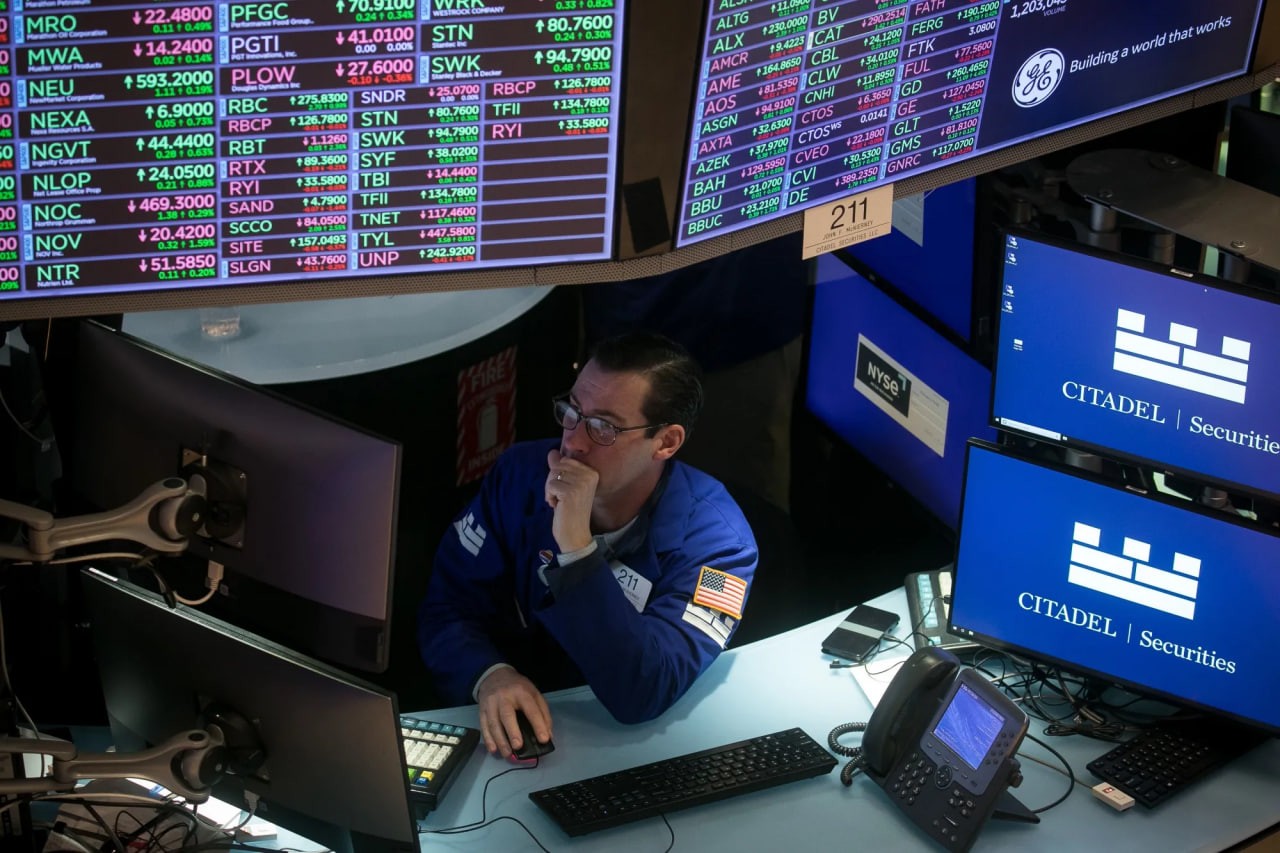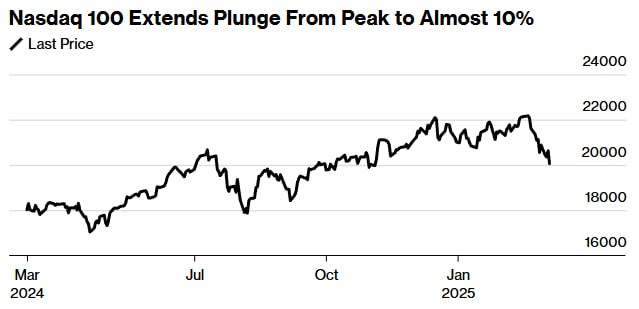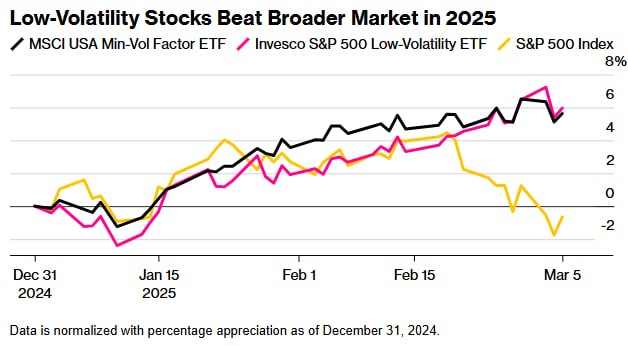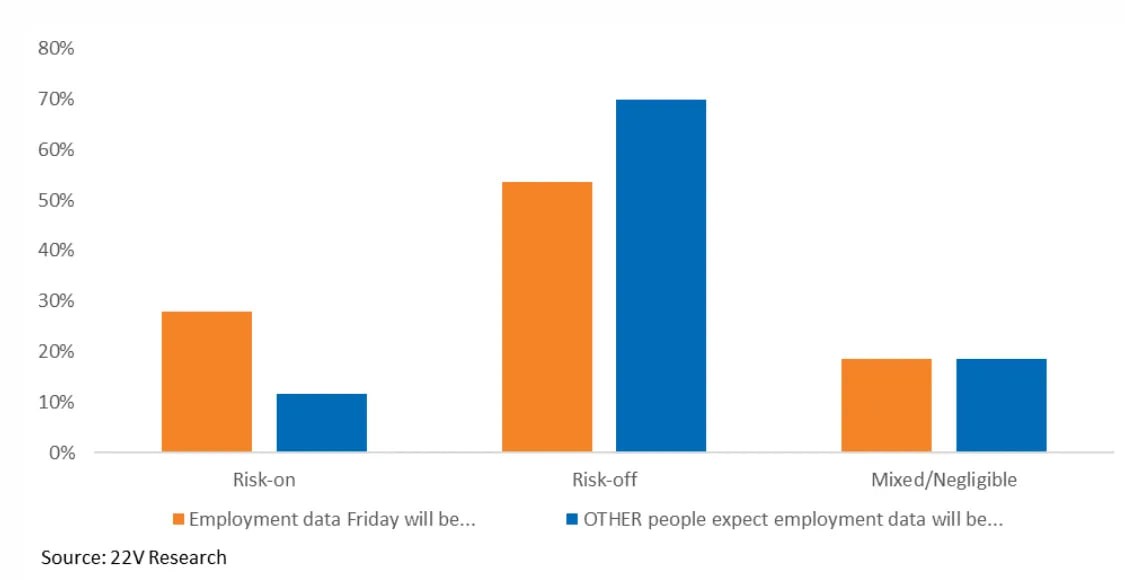Wall Street traders continued to navigate intense, quick and sharp market swings amid a slew of tariff headlines, with stocks getting pummeled after almost wiping out their losses.
The S&P 500 slid 1.8% and the Nasdaq 100 sank 2.8%, with the tech-heavy gauge on the brink of a technical correction. Sentiment was so fragile that equities failed to stage a rebound even after President Donald Trump’s decision to delay levies on Mexican and Canadian goods covered by the North American trade deal. The dollar saw its longest losing streak since September, while the peso and the loonie rose. Treasury trading was fairly muted.

Wall Street navigates tariff headlines before jobs report.
The new chapter on the trade war was unveiled days after the US announced its largest tariff increase in a century. Trump argued that foreign countries are “ripping us off” and that tariffs would put the US on a stronger footing. When asked for his thoughts on the stock selloff, he told reporters that “it’s globalists who see how rich our country is going to be and they don’t like it.”
“Volatility seems like the only certainty as policies are implemented, challenged, modified, then often re-implemented,” said Chris Low at FHN Financial.
A slide in tech shares dragged down the market, with Nvidia Corp. leading losses in megacaps. In late hours, Broadcom Inc. gave an upbeat revenue forecast, reassuring investors that spending on artificial-intelligence computing remains healthy. Hewlett Packard Enterprise Co. issued a weak profit outlook and announced plans to eliminate about 3,000 jobs.
Just 24 hours ahead of the US payrolls report, data showed jobless claims fell, offering some relief after other figures pointed to a worsening labor-market. The employment print is expected to show a pick in job growth.
Treasury Secretary Scott Bessent rejected the idea that tariff hikes will ignite a new wave of inflation. Separately, Federal Reserve Governor Christopher Waller repeated his assessment that the impact on prices from tariffs likely won’t be significant. While he wouldn’t support lowering rates in March, Waller sees room to cut two, or possibly three, times this year.
The S&P 500 hovered near its closely watched 200-day moving average. The Dow Jones Industrial Average fell 1%. A gauge of the Magnificent Seven megacaps sank 2.9%. The Russell 2000 slid 1.6%.
The yield on 10-year Treasuries rose one basis point to 4.29% A dollar gauge dropped 0.1%.

“Right now, trade policy is dominating market action,” said Chris Larkin at E*Trade from Morgan Stanley. “Until the tariff smoke clears, it could continue to be a bumpy ride for traders and investors.”
To Steve Chiavarone of Federated Hermes, the market “isn’t really forgiving” at this stage.
“At the end of the day, we think we are just in a period of max uncertainty and a bit of an economic soft patch,” he noted. “That said, we think this gives way to a much better second half.”
The recent rout in the S&P 500 is finally giving one group its chance to shine.
Low-volatility stocks are outperforming the overall market and living up to expectations of doing well when things sour. After two underwhelming years, it has become the best-performing investment theme in 2025, among 13 tracked by Bloomberg Intelligence.
While the S&P 500 sinks from a record, two of the largest low-volatility exchange-traded funds — the Invesco S&P 500 Low-Volatility ETF (SPLV) and the MSCI USA Min-Vol Factor ETF (USMV) — are clocking their best relative performances in a few years.

All that is happening as traders gear up for Friday’s jobs data.
Payrolls rose by 160,000 in February, a slight improvement from the 143,000 increase a month earlier yet softer than during the final months of 2024, according to the median projection of economists surveyed by Bloomberg. The unemployment rate is seen holding at 4%.
A survey conducted by 22V Research shows 84% of the investors we polled are watching payrolls closer than normal. Some 53% of survey respondents think Friday’s data will be “risk-off,” 28% “risk-on” and 19% “mixed/negligible.”
“Investors have turned their focus back to payrolls this month after being more focused on average hourly earnings last month,” said Dennis DeBusschere, founder of 22V.

